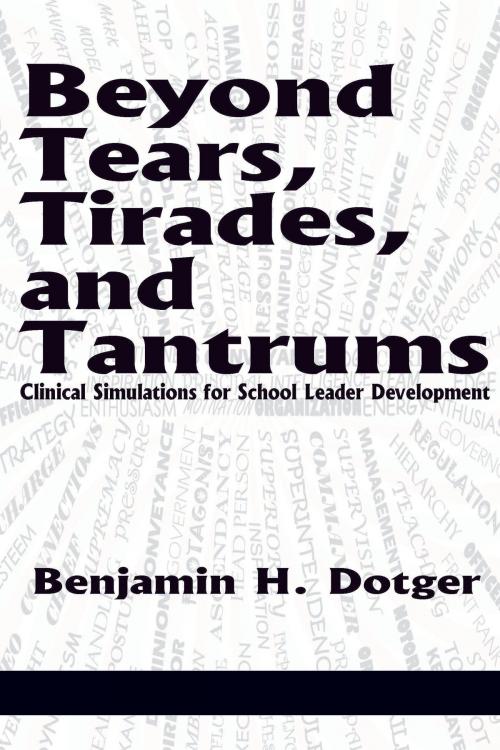Beyond Tears, Tirades, and Tantrums
Clinical Simulations for School Leader Development
Nonfiction, Reference & Language, Education & Teaching, Educational Theory, Leadership, Administration, Health & Well Being, Medical| Author: | Benjamin H. Dotger | ISBN: | 9781623965730 |
| Publisher: | Information Age Publishing | Publication: | March 1, 2014 |
| Imprint: | Information Age Publishing | Language: | English |
| Author: | Benjamin H. Dotger |
| ISBN: | 9781623965730 |
| Publisher: | Information Age Publishing |
| Publication: | March 1, 2014 |
| Imprint: | Information Age Publishing |
| Language: | English |
Clinical simulations provide school leaders with opportunities to enact and examine their leadership approaches, decisions, and policies, without consequence. Building on medical education’s use of standardized patients, this book introduces standardized individuals and clinical simulations into the field of school leader preparation. In live, onetoone interactions, school leaders engage in variety of professional situations with standardized students, parents, teachers, and community members. Each carefully scripted standardized individual presents a problem of practice, while unscripted school leader participants are free to enact their own professional knowledge, dispositions, and decisionmaking approaches as they engage within a simulation. When confronted by an angry father (in simulation), leaders practice their explanations and policies surrounding challenged curriculum. When presented with an inebriated student (in simulation), leaders enact decisionsteps associated with student discipline and communicating with health and law enforcement officials. When students and parents express concerns about classroom instruction, leaders engage with standardized teachers (in simulation) to focus on instructional quality. The thirteen simulations in this book address a broad range of complex, but common issues that school leaders encounter through daily service in K12 schools. This book provides school leader educators and professional development facilitators with all the information necessary to fully implement clinical simulations for school leader development. Included are chapters on the concept of clinical simulations, training procedures for standardized individuals, logistical steps toward implementation, and the documents necessary to successfully facilitate thirteen different clinical simulations. NOTE: This book is designed for school leader educators and school district professional development personnel who intend to facilitate clinical simulations with cohorts of school leaders. School leaders who intend to participate in the actual simulations should consult the separate text: Clinical Simulations for School Leader Development: A Companion Manual for School Leaders.
Clinical simulations provide school leaders with opportunities to enact and examine their leadership approaches, decisions, and policies, without consequence. Building on medical education’s use of standardized patients, this book introduces standardized individuals and clinical simulations into the field of school leader preparation. In live, onetoone interactions, school leaders engage in variety of professional situations with standardized students, parents, teachers, and community members. Each carefully scripted standardized individual presents a problem of practice, while unscripted school leader participants are free to enact their own professional knowledge, dispositions, and decisionmaking approaches as they engage within a simulation. When confronted by an angry father (in simulation), leaders practice their explanations and policies surrounding challenged curriculum. When presented with an inebriated student (in simulation), leaders enact decisionsteps associated with student discipline and communicating with health and law enforcement officials. When students and parents express concerns about classroom instruction, leaders engage with standardized teachers (in simulation) to focus on instructional quality. The thirteen simulations in this book address a broad range of complex, but common issues that school leaders encounter through daily service in K12 schools. This book provides school leader educators and professional development facilitators with all the information necessary to fully implement clinical simulations for school leader development. Included are chapters on the concept of clinical simulations, training procedures for standardized individuals, logistical steps toward implementation, and the documents necessary to successfully facilitate thirteen different clinical simulations. NOTE: This book is designed for school leader educators and school district professional development personnel who intend to facilitate clinical simulations with cohorts of school leaders. School leaders who intend to participate in the actual simulations should consult the separate text: Clinical Simulations for School Leader Development: A Companion Manual for School Leaders.















